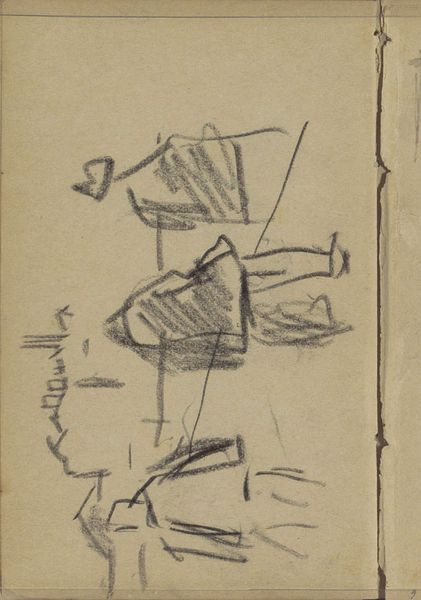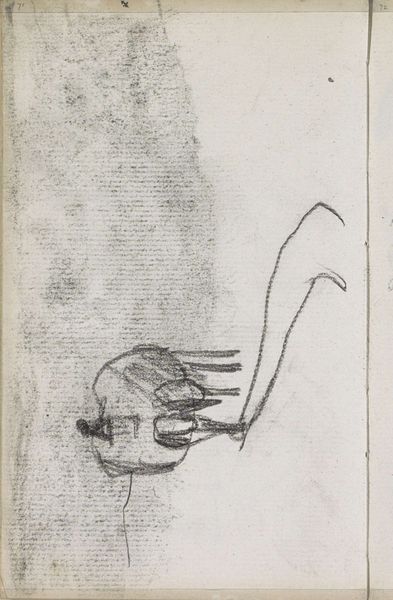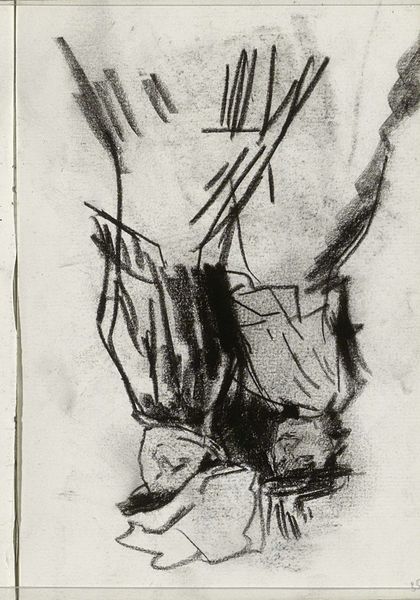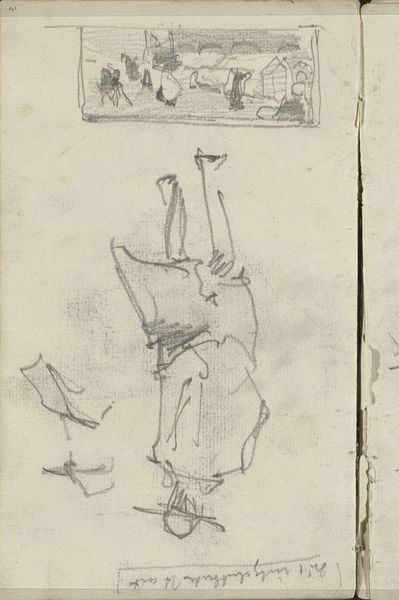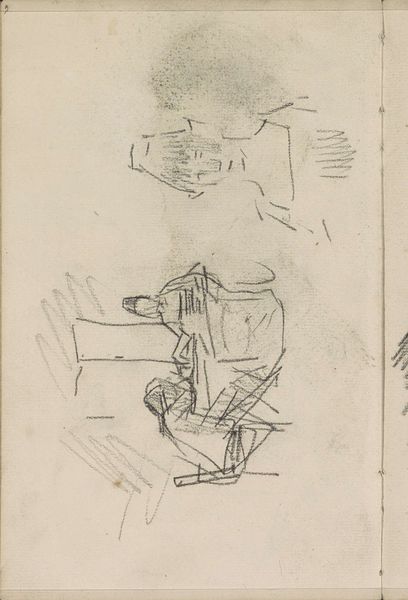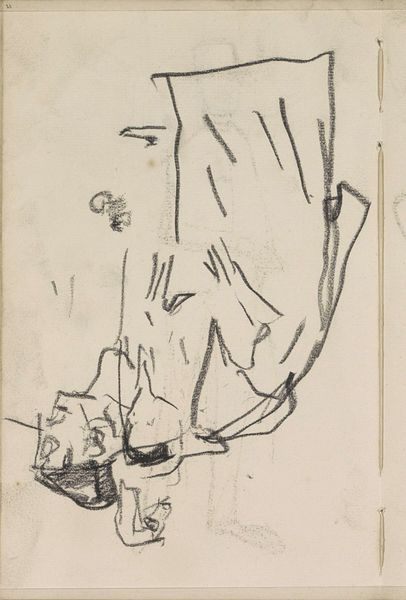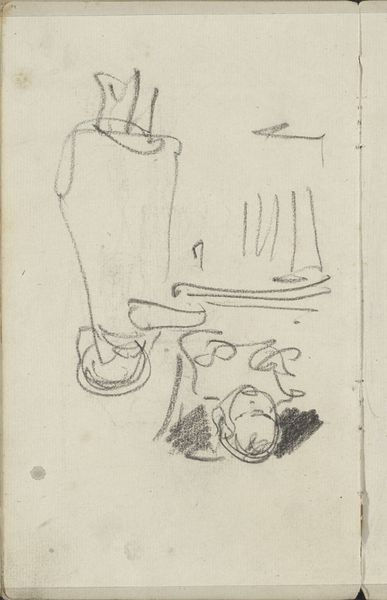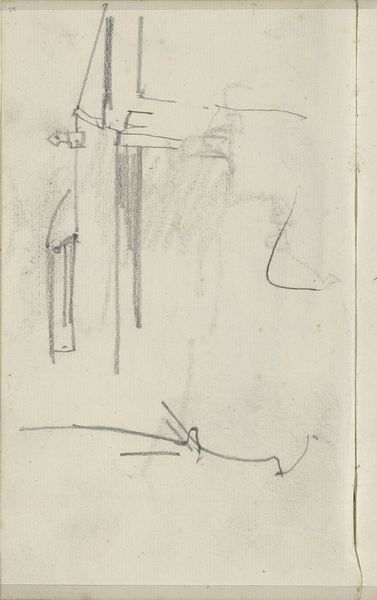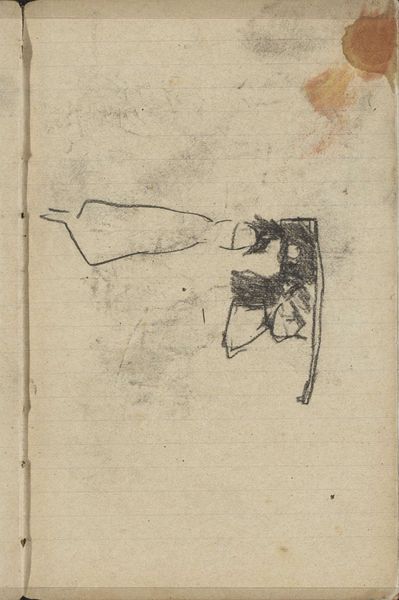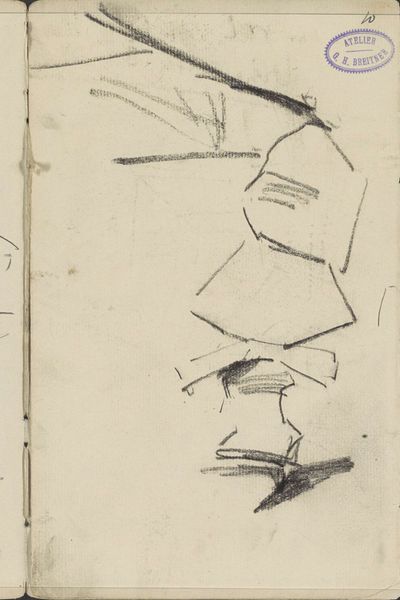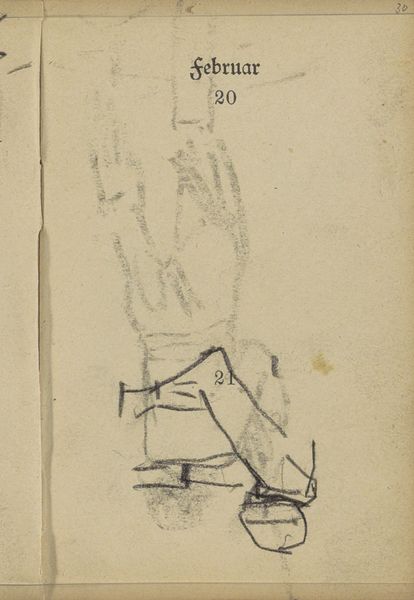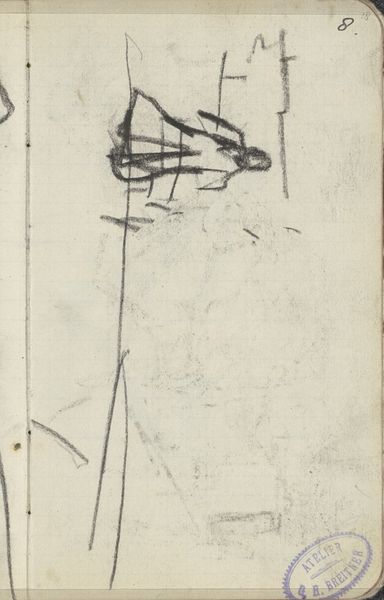
Copyright: Rijks Museum: Open Domain
Editor: Here we have George Hendrik Breitner’s "Staande vrouw," created around 1893. It's a graphite and pencil drawing currently residing at the Rijksmuseum. It feels very… unfinished, almost like a fleeting thought captured on paper. What jumps out at you when you see it? Curator: Oh, the sheer honesty! It's a fragment, a whispered secret. Breitner offers us the bones of a woman – not her face, not her defining features, just the downward sweep of a figure. Look how he’s used these energetic lines, barely tethered, that give this drawing a vibrant pulse, like a charcoal heartbeat! It almost feels as though, at any moment, she could be erased. What do you feel that incompleteness offers? Editor: It's like glimpsing someone from a passing train; you get an impression, but not the whole story. Curator: Precisely! And that’s where the magic lies. The *not* knowing allows us, *forces* us, to participate. To clothe her in our own narratives. I find it particularly poignant in its era, where idealized portraits were commonplace. He gives us instead this sketch, raw and profoundly intimate. A rebellion, perhaps? Editor: A rebellion against polish, definitely. So, in its time, it was like a snapshot of reality versus a staged portrait. It focuses on motion and anonymity, wouldn't you agree? Curator: Precisely! That's a wonderfully concise observation. It's interesting to imagine her story beyond the sketch. Breitner provokes thought, not just observation. This work almost anticipates our contemporary fascination with ephemerality. Editor: I see what you mean. Thank you; this made me consider the power of suggestion in art. Curator: And for me, a reminder that beauty often resides in what is *unsaid*, unwritten, *undrawn.* A sketch isn’t a reduced piece, but a magnifying lens to something much grander.
Comments
No comments
Be the first to comment and join the conversation on the ultimate creative platform.
